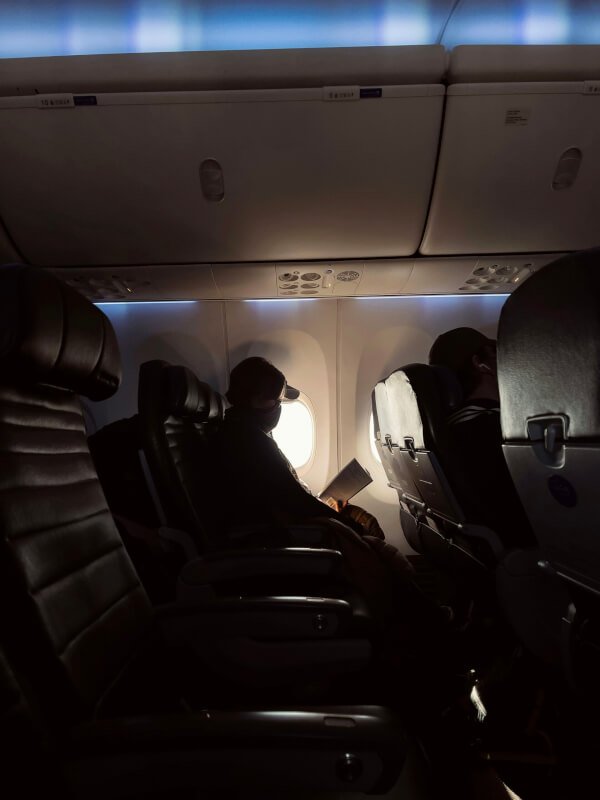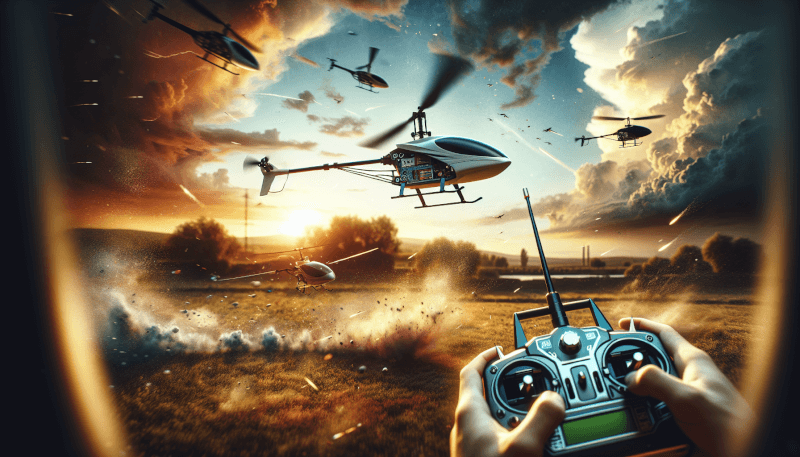In the exciting world of RC heli flying, beginners often encounter a few hiccups along the way. But fear not, as this article is here to guide you through the top five most common mistakes made by beginners. From improper trimming to rushing into advanced maneuvers, we’ll highlight the pitfalls you should avoid to make your RC heli flying experience smooth and enjoyable. So buckle up and let’s navigate through these common beginner mistakes together!

Flying without proper training
Flying a remote control helicopter can be a thrilling and enjoyable hobby, but it’s essential to receive proper training before attempting to fly one. Many beginners make the mistake of jumping right into flying without understanding the controls or learning the basic maneuvers. This lack of training not only puts the operator at risk but also increases the likelihood of damaging the helicopter. Investing time and effort into proper training will help you gain confidence and ensure a safer and more enjoyable flying experience.
Lack of understanding controls
One of the most common mistakes beginners make is not taking the time to understand the controls of their remote control helicopter. Each control stick or button on the transmitter performs a specific function, such as controlling throttle, pitch, roll, and yaw. Without understanding these controls, it becomes challenging to maneuver the helicopter properly and maintain control during flight. Take the time to read the instruction manual and familiarize yourself with the controls before attempting to fly.
Failure to learn basic maneuvers
Learning and practicing basic maneuvers is crucial to becoming a skilled remote control helicopter pilot. Beginners often skip this step and attempt advanced maneuvers without mastering the basics, which can lead to crashes and frustration. Basic maneuvers include hovering, forward flight, backward flight, left and right turns, and landing. Take the time to practice these maneuvers repeatedly until you feel comfortable and confident before moving on to more advanced flying techniques.
Skipping simulator practice
Using a flight simulator is an excellent way to train and hone your flying skills without the risk of damaging your remote control helicopter. However, many beginners make the mistake of skipping simulator practice and jump straight into flying their physical helicopter. Flight simulators allow you to practice various maneuvers, improve your coordination, and familiarize yourself with the controls. Take advantage of this resource and spend time on the simulator before taking your helicopter to the skies.
Inadequate pre-flight check
Before every flight, it’s essential to conduct a thorough pre-flight check to ensure that your remote control helicopter is in good working condition. Neglecting this step can result in unexpected issues during flight and potentially cause accidents. There are several key areas to check before taking off.
Failure to check battery level
One common mistake is failing to check the battery level before flying. Running out of battery mid-flight can lead to a loss of control and an uncontrolled crash. Always make it a habit to check the battery level and ensure it is fully charged before starting your flight.
Overlooking loose connections
Another crucial element to check is the connection between the helicopter and the transmitter. Loose connections can result in a loss of control or intermittent signal, leading to unstable flight or even a crash. Take a moment to inspect and ensure all connections are secure and properly connected.
Neglecting blade and servo inspections
Blades and servos play a vital role in the stability and control of your remote control helicopter. Failing to inspect them can lead to unexpected failures and potentially dangerous situations. Regularly check the blades for any signs of damage, such as cracks or chips, and ensure they are securely attached. Additionally, inspect the servos for proper functionality, ensuring they move smoothly without any binding or jerking.
Ignoring weather conditions
Flying a remote control helicopter in unfavorable weather conditions can lead to catastrophic results. Ignoring weather conditions is a severe mistake many beginners make, placing themselves and their helicopter at risk.
Flying in strong winds
Strong winds can greatly affect the stability and control of a remote control helicopter. Flying in windy conditions increases the chances of losing control and crashing. Always check the weather forecast before flying and avoid flying on windy days.
Not considering rain or snow
Wet weather conditions, such as rain or snow, can damage both the electronics and mechanical components of a remote control helicopter. Moisture can cause corrosion and short circuits, leading to malfunctions and crashes. It’s important to wait for dry weather conditions before flying and avoid exposing your helicopter to rain or snow.
Disregarding temperature extremes
Extreme temperatures can also impact the performance of a remote control helicopter. Cold temperatures can reduce battery life and affect the responsiveness of the controls, while hot temperatures can cause overheating and potential damage. Be mindful of temperature extremes and avoid flying in extremely hot or cold conditions.
Incorrect setup and maintenance
Proper setup and regular maintenance are essential for the safe and optimal performance of your remote control helicopter. Neglecting these aspects can lead to poor flying experiences and potential accidents.
Improperly balancing the rotor blades
Balancing the rotor blades is crucial for stable and smooth flight. Beginners often overlook this step, leading to vibrations and reduced control during flight. Take the time to balance the rotor blades properly using a balancing tool or technique recommended by the manufacturer.
Neglecting regular maintenance
Just like any other mechanical device, remote control helicopters require regular maintenance to ensure they operate correctly. Many beginners neglect this aspect, leading to unnecessary breakdowns and failures. Follow the manufacturer’s maintenance recommendations, including checking and tightening screws, cleaning components, and lubricating moving parts.
Ignoring proper center of gravity
The center of gravity plays a significant role in the stability and control of a remote control helicopter. Ignoring the proper center of gravity can lead to unstable flight and potential crashes. Follow the manufacturer’s guidelines to determine the correct center of gravity and make any necessary adjustments to achieve proper balance.

Overconfident and aggressive flying
Becoming overconfident and attempting advanced maneuvers too soon is a common mistake made by beginner remote control helicopter pilots. While it’s natural to be eager to push your limits, it’s important to master the basics before exploring more advanced flying techniques.
Attempting advanced maneuvers too soon
Advanced maneuvers require a high level of skill and control. Rushing into these maneuvers without the necessary experience can result in crashes and frustration. Take your time to become proficient in the basics before attempting advanced tricks, flips, or inverted flight.
Ignoring safe flying distances
Maintaining a safe flying distance is crucial for the safety of both your remote control helicopter and others around you. Beginners often underestimate the speed and agility of their helicopters, resulting in collisions or near misses. Always ensure you have sufficient space to maneuver and keep a safe distance from people, animals, and objects.
Pushing the limits without mastering basics
Attempting to push the limits of your remote control helicopter without mastering the basics is a recipe for disaster. It’s important to progress gradually and build a solid foundation of skills before trying to fly faster, perform complex maneuvers, or experiment with more advanced models. Take the time to practice, learn, and build confidence in your abilities before pushing the limits.
Poor battery management
Managing the battery of your remote control helicopter is essential for safe and uninterrupted flights. Neglecting proper battery management can lead to performance issues and potentially damage the battery itself.
Neglecting to charge batteries fully
Starting a flight with partially charged batteries increases the risk of the battery draining mid-flight, resulting in a loss of control. Always make sure to charge your batteries fully before each flight to ensure optimal performance and longer flight times.
Over-discharging and damaging batteries
Allowing the battery to over-discharge can damage its capacity and potentially render it unusable. Beginners often make the mistake of pushing the flight time too far, risking damage to the battery. Use a battery monitor or timer to keep track of flight time and land your helicopter before the battery reaches dangerous voltage levels.
Failing to monitor flight time properly
Monitoring the flight time is crucial for battery management. Beginners may become engrossed in flying and lose track of time, leading to excessive flight times and potential damage to the battery. Use a dedicated timer or monitor on your transmitter to keep track of flight time and ensure you land your helicopter safely within the recommended flight duration.

Ignoring safety measures
Safety should always be a top priority when flying a remote control helicopter. Ignoring safety measures can result in accidents, injuries, or damage to property.
Flying without proper safety gear
Wearing appropriate safety gear, such as goggles, gloves, and protective clothing, is essential to minimize the risk of injury during flight. Beginners may overlook this aspect and fly without proper safety gear, exposing themselves to potential harm. Always prioritize safety and wear the necessary protective equipment when flying.
Not checking the heli’s condition before each flight
Before every flight, it’s important to thoroughly inspect and check the condition of your remote control helicopter. Neglecting this step can lead to unexpected mechanical failures and accidents. Take the time to visually inspect all components, test the controls, and ensure everything is in good working order before taking off.
Flying in unauthorized areas
Flying in unauthorized areas, such as crowded public spaces or near airports, is not only reckless but also illegal in many jurisdictions. Beginners may not be aware of the rules and regulations regarding remote control helicopter flight. Always research and adhere to the local laws and regulations, ensuring you fly only in designated areas or remote locations where it is safe and legal to do so.
Lack of spatial awareness
Maintaining spatial awareness is crucial for safe and smooth flight. Beginners often struggle with judging distance, height, and maintaining orientation, which can lead to crashes and uncontrolled flight.
Difficulty judging distance and height
Accurately judging distance and height is essential for maintaining safe and controlled flight. Beginners may struggle with depth perception and underestimate or overestimate their helicopter’s position, leading to collisions or loss of control. Practice flying at varying altitudes and distances to improve your spatial awareness and judgment.
Losing orientation during flight
Maintaining orientation is another challenge faced by beginners. When the helicopter is facing away from you, it can be easy to become disoriented and lose track of which direction it is facing. This can result in unintended movements and potentially crashing the helicopter. Practice maintaining orientation by regularly switching the helicopter’s direction during flight and using features like different-colored rotor blades for visual cues.
Inability to anticipate heli’s movements
Anticipating the movements and behavior of a remote control helicopter is a skill that comes with practice and experience. Beginners may struggle to predict how their helicopter will react to different inputs, resulting in unstable flight and loss of control. Continuous practice and observation will help develop the ability to anticipate and respond appropriately to the helicopter’s movements.

Using incorrect setup and equipment
Choosing the right setup and using appropriate equipment for your skill level is vital for a successful flying experience. Using incorrect setup and equipment can lead to poor performance, instability, and potential accidents.
Choosing the wrong heli size for skill level
Remote control helicopters come in various sizes and configurations, each suited to different skill levels. Beginners often make the mistake of choosing a helicopter that is too advanced or too large for their skill level, resulting in difficulties controlling and maneuvering the aircraft. Consult with experienced pilots or instructors to determine the appropriate size and type of helicopter that aligns with your skill level.
Inappropriate transmitter settings
The transmitter plays a crucial role in controlling the helicopter, and having the right settings is essential for smooth and accurate flight. Beginners may overlook the importance of properly configuring their transmitter to match their helicopter and personal preferences. Refer to the instruction manual and seek guidance from experienced pilots or instructors to ensure your transmitter settings are appropriate for your helicopter and flying style.
Using low-quality or mismatched parts
Using low-quality or mismatched parts can significantly impact the performance and stability of your remote control helicopter. Beginners may be tempted to save money by opting for cheaper or incompatible parts, but this can lead to poor flight characteristics and potential failures. Invest in high-quality, compatible parts recommended by the manufacturer to ensure optimal performance and safety.
Rushing the learning process
Learning to fly a remote control helicopter is a gradual process that requires patience, practice, and guidance. Rushing the learning process is a common mistake made by beginners and can lead to frustration, accidents, and discouragement.
Moving to advanced models too quickly
Beginners may be eager to upgrade to more advanced helicopters or models before mastering the basics. While it’s natural to aspire to fly more advanced aircraft, it’s important to take the time to develop your skills and build a solid foundation. Mastering the basics will make it easier to transition to more advanced models later on.
Skipping learning from experienced pilots
Experienced pilots can offer valuable insights, tips, and guidance that can greatly accelerate your learning process. Beginners may underestimate the value of learning from more experienced individuals and choose to learn on their own. Engage with experienced pilots, join local flying clubs or online communities, and seek guidance to benefit from their knowledge and experiences.
Neglecting to review own flight recordings
Recording your flights and reviewing them afterward is a valuable tool for self-improvement. Beginners may overlook this practice, missing out on the opportunity to identify and correct their mistakes. Use a camera or recording device to capture your flights, and take the time to watch and analyze them. Look for areas where you can improve, identify patterns, and adjust your flying technique accordingly.
In conclusion, understanding and avoiding these common beginner mistakes in remote control helicopter flying will pave the way for a safe, enjoyable, and successful flying experience. Take the time to receive proper training, practice basic maneuvers, conduct thorough pre-flight checks, follow safety measures, and progress at a gradual pace. By doing so, you’ll develop the necessary skills, confidence, and knowledge to become a skilled remote control helicopter pilot. Happy flying!



